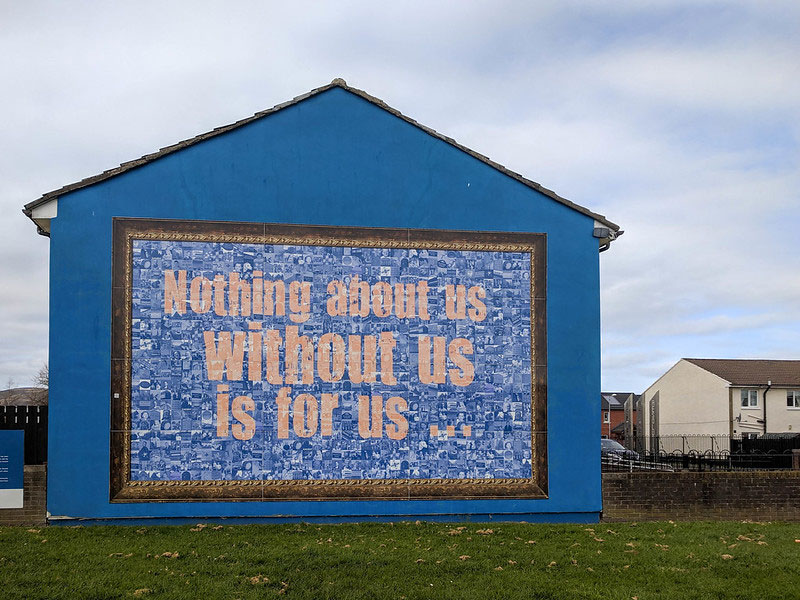Every year, NPQ prepares a survey to ask you—our readers—what is on your minds. This year, we had an extra question for you: Are you noticing any changes in your organization’s board, and if so, what?
Some of you said that you had seen no change or a slow continuing decline. There were a lot of “dis” words attached to these situations: “disengaged,” “disinterested,” “disorganized,” and “disjointed”—and one “dys” word came up again and again: “dysfunctional.”
In some cases, staff reported being blamed for fundraising declines and the loss of contracts:
The more frustrated the board is regarding raising funds, the more they think it is the staff’s fault.
The board has become obsessed with funding—not with raising it but with obsessing on its erratic ups and downs.?.?.?. The board looks to what can be cut rather than how to strengthen the agency—even in these times—to ensure an even greater impact on troubled lives and a distressed central city.
In the midst of revenue decline the BOD has become hyper-vigilant, tending to micromanagement—asking for frequent interim financial and fundraising status reports. Staff has felt that strategic leadership is unstable as board has been in this hyper panic mode.
And in other cases, board members just wandered away, struggling with their own intensifying problems related to the economic downturn.
But 58 percent of you said that you had indeed seen a discernable change, with most characterizing the shift as a greater sense of urgency on the part of the board, which in turn engendered more board member participation and focused attention on the organization’s financial dynamics and programming:
The dynamics have changed rapidly, especially driven by the need to find new/?replacement revenue. The poor economy and tightened resources have put unprecedented urgency on planning.
We had to ramp up our financial sophistication;? our new business model gives us more cash flow vulnerability.
[The board has] become more focused on results as resources have become more scarce.
[Board members] are increasingly involved due to the significance of the issues. This is both good, because they have a variety of strategic ideas on important issues, and challenging, because it sometimes leads them into non-governance territory.?.?.?. More problems in the state’s ability to pay, combined with rule changes and drops or losses in funding that are unprecedented in our forty-year history, have sparked the changes.
Interestingly, the challenging economic environment caused some boards to become more ?“conservative and risk averse”—driving them to controlling and micromanaging behavior:
Sign up for our free newsletters
Subscribe to NPQ's newsletters to have our top stories delivered directly to your inbox.
By signing up, you agree to our privacy policy and terms of use, and to receive messages from NPQ and our partners.
Our board has become much more conservative and focused on a single financial bottom line—sometimes crossing the line into management prerogatives.
Others were reported to have become more innovative and creative:
The board is opening up to more creative and provocative ways of fundraising and awareness raising.
And willing to step up to even the most difficult issues .?.?.
[They have] an increased participation in advocacy programs and a willingness to tackle difficult issues.
While they voted reluctantly to cut salaries, they have clearly taken on the emotional as well as the practical burden of this decision. They have significantly increased activities designed to increase employee morale and thank employees, and they have also increased their development activities.
The board spends very little time managing and more time thinking about the long-term good of the organization. It’s been great. We went through layoffs and there’s been no second guessing—only support for management and those who stayed. They understood how hard it was and backed up all of our decisions. The board is also more interested in fundraising and are looking at themselves more critically, wondering if we have the right people on the board. They are less tolerant of people who don’t attend meetings.?.?.?. We have had some conflict on the board but it’s all been positive—very issue-based and not at all personal. I think we’ve made better decisions .?.?. as they saw our finances deteriorate and then people and programs cut, they realized that if they don’t follow through, the results can be pretty drastic.
And for some organizations, there is both positive and negative intensity keeping the board engaged:
The board is more engaged because we’ve had huge successes, but our financial status is fragile. The combination has increased [board members’] participation in meetings, prompting them to plan a retreat where we will think about the mission and strategize about programs and income. That has pushed them to make some very difficult decisions that have been necessary for the organization to move forward. It’s also motivated them to take their own roles seriously.
We are a thirty-year-old organization that was 100 percent government-funded .?.?. the agency has experienced significant challenges which have forced the board to engage as they never have before (governor veto of a program that was 25 percent of our funding, subsequent staff layoffs, changing funding landscape, etc.). It is evident which board members are only interested in maintaining the status quo (showing up, nodding and eating cookies) and those who are beginning to ask great questions and then find the answer that is best ?for us right now.
As we look at this 2010 profile of boards garnered from our readers, the picture is anything but consistent. Still, there are some recurring themes encompassed in the reports, and perhaps most important among them is a new willingness on the part of many boards to dig in and understand their organization’s programmatic and financial choices in terms of impact and sustainability. Jeanne Bell addresses this in her article “Beyond Financial Oversight: Expanding the Board’s Role in the Pursuit of Sustainability,” later in this issue. Bell’s article makes a clear distinction between a board’s financial oversight/?monitoring capacity and its capacity to help craft a clear and aligned programmatic/?financial design that speaks to the best interests of the constituents, while attending to the future prospects of the group. I would venture to say that if this period of time could produce an understanding of the need for that higher level of financial literacy among boards, it would be an advance of some significance.
But in this issue you will also find Julia Classen’s article “Here We Go Again: The Cyclical Nature of Board Behavior.” Classen’s article suggests that after their first founding period, many boards cycle between periods of attention and inattention, and that these cycles are largely determined by a combination of external stressors and internal capacity, but not really very much by the composition of the board itself. This suggests that if we do not as a standard of practice codify advances like the one suggested by Bell, when the crisis wanes so may the board’s appetite for this core fiduciary work. It behooves us to introduce our boards to the distinction, and urge them to the framework suggested by Bell.
Let us know how it goes!













